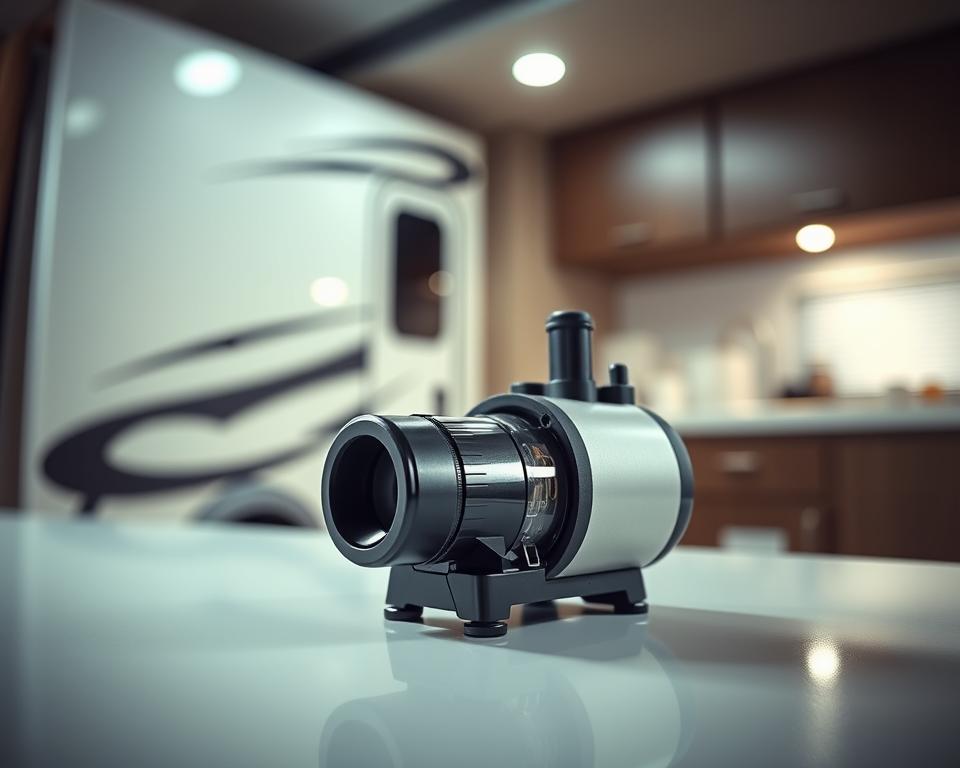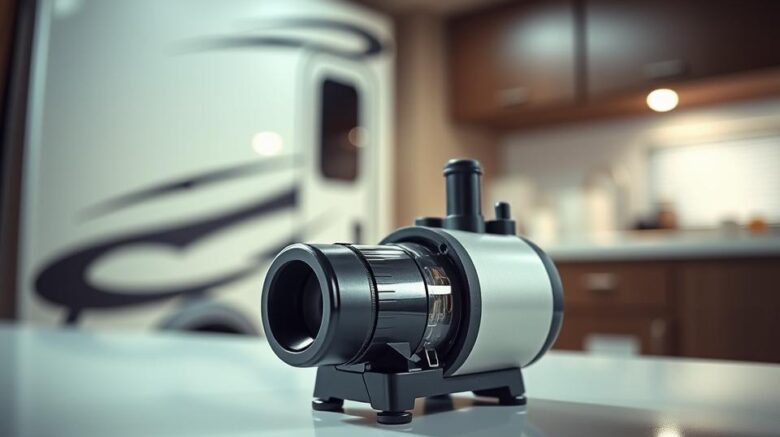Camper Water Tank plus Pump: – Ultimate Resource
Intrigued by the ingredient to easy roaming?? It’s largely thanks to your RV water Tank and Pump. If you’re heading to national parks or just a weekend retreat, commanding your RV’s water system is paramount. In this guide we explore the fundamentals: the parts, upkeep, and strategies for smooth travel. Grasping each component, from the pipework to reservoir filling, guarantees water is always ready during your journeys – RV septic service.
Fundamental Findings
- Getting familiar with the RV water system elevates your travel fun.
- The RV water Tank and Pump are indispensable for a steady water supply.
- Regular servicing prolongs the service life of your RV plumbing.
- Knowing how to fill your Tank properly can forestall future issues.
- Fixing your water Pump can spare you unexpected problems.
Demystifying RV Water Systems
RV water systems consist of two main parts: the fresh-water setup and the wastewater mechanism. The fresh side houses several key elements like the storage Tank, pressure Pump, and faucets, resembling household plumbing but adapted to the mobile needs of road living.
Using clean water is essential for the system’s performance. It guarantees the well-being of all passengers. It’s important to keep the RV plumbing in top shape through routine maintenance – covering proper drainage to avoid leaks and other issues. Frequent inspections help RV enthusiasts dodge water-related surprises during their journeys.

The Role of the RV Water Tank
The RV fresh-water reservoir is pivotal for a smooth journey. It stores the clean water needed for drinking, cooking, and cleaning. The capacity of this container changes with each RV model, impacting how much water can be stored – and has a direct bearing on how long you can stay off-grid before needing a refill.
Keeping the RV water Tank hygienic is critical. Periodic cleaning prevents dangerous contaminants, ensuring water stays safe for use. Skipping maintenance can encourage bacteria or algae growth, making the water hazardous.
Appreciating the RV water Tank’s role improves water management on the road. Consistent upkeep and frequent refills ensure a worry-free experience. It’s key to have ample water for all travel needs, ensuring a trouble-free RV adventure.
How to Fill Your RV Water Tank
Refilling your RV water Tank demands meticulous action to confirm it’s done correctly. There are two primary methods: gravity-feed filling and city-pressure filling. Perfecting these methods greatly improves your RV water routine.
Gravity-feed is direct. You just need a drink-safe water hose. Attach this hose to a water source, then to the Tank’s opening, and let gravity do the rest. Be sure to monitor the water level to avoid spills.
Pressure filling uses a city water connection, offering faster delivery. You should use a pressure regulator to control water flow. Connect the hose from the municipal source to your RV. This method ensures quick and consistent supply to your Tank.
Whichever approach you use, remember these key safety tips: Consistently monitor the Tank when filling to prevent overflow, and draw only safe water to ward off health issues. Mastering these filling and safety techniques will turn your RV trips even more enjoyable.
RV Water Tank and Pump: Core Elements Unpacked
The RV Tank-and-Pump combo are crucial to any RV’s plumbing system, providing a steady and efficient water supply for all your needs. The RV water Pump’s main job is to push water from the Tank, so clean water is always ready. That’s critical for cooking, cleaning, and showering.
RV plumbing offers different Pump types, each with individual benefits. Diaphragm pumps are favoured for their consistent water pressure, while centrifugal models are loved for mechanical simplicity and energy thrift. It’s important to weigh flow rate, noise, and installation ease when choosing your Pump.
To conclude, the RV water Tank and Pump are irreplaceable to your water system’s operation. A dependable Pump guarantees strong pressure and smooth flow, improving your overall travel experience.
Selecting the Best-Fit RV Water Pump
Choosing the appropriate RV water Pump is essential for your plumbing’s best performance. When evaluating a Pump, considering several points is crucial for a great camping experience. Ensuring it matches your RV’s water system is paramount.
Keep these important aspects in mind:
- Flow Rate: Opt for a Pump with a flow rate that meets your usage needs. A higher flow means faster reservoir refills.
- Pressure Ratings: Your RV’s different fixtures dictate the required pressure levels. Pick a Pump whose specs satisfy those needs for smooth operation.
- Noise Levels: Noise can be an issue with some Pumps. If you prize silence, compare models for their noise output.
Brands like SHURflo and VEVOR are favourites for many RVers, each offering distinct advantages. A thoughtful assessment of these brands will guide your decision-making process.
Understanding these factors is not only crucial for the proper purchase but also equips DIY owners with key know-how for upkeep and replacements.
Using City Water for Your RV
Connecting your RV to city water provides an continuous supply of fresh water, moving you beyond just using your Tank. This delivers a more convenient camping experience. Ensure to follow specific steps for a successful hookup.
First, identify the city water connection port on your RV. It’s usually marked by a bright or black connector, sometimes tagged for ease. Grab a potable water hose made for RVs; this grade of hose protects your water safe from contaminants.
It’s critical to attach a pressure regulator before making the connection. This fitting safeguards your plumbing by taming the water pressure. With the regulator in place, connect the hose from it to the water source.
Once connected, keep an eye on the water pressure. Maintain a steady, gentle flow to prevent hose damage. Inspect your hoses regularly for any wear or leaks and quickly replace parts as needed.
Following these steps for city hookup boosts your camping convenience and aids in maintaining your RV’s condition.
Caring for Your RV Water Tank
Ensuring your RV’s water Tank is in good order is essential for fresh, healthy water while on the road. A clean Tank avoids bacterial growth and contamination. To begin, regularly sanitise the Tank: combine water with a bit of bleach for an effective residue-free clean.
It’s crucial to watch for leaks and monitor Tank pressure. Routine checks can spot problems early, avoiding expensive fixes. A solid schedule preserves the water system in excellent health.
For optimal maintenance, create a checklist:
- Check water levels and quality regularly.
- Sanitise the Tank every six months with a bleach solution.
- Inspect for cracks in the reservoir.
- Monitor Tank pressure and Pump function.
- Flush the Tank to remove any sediment buildup.
RV Water Pump Troubleshooting
RV water Pump issues can be vexing, upending travel plans unexpectedly. Encountering strange noises, experiencing low pressure, or facing complete Pump failure are typical problems. Learning how to troubleshoot these issues can greatly enhance your trips.
Hearing odd sounds from your Pump may signal a problem. First step is to check for loose connections and secure them. When there’s low water pressure, inspect hoses and fittings for leaks. Even a tiny leak can significantly affect flow, prompt troubleshooting is essential.
If your Pump fails altogether, verify electrical connections. Start with examining the Pump’s fuse. Should the fuse is fine, continue diagnosing for wear or damage.
A step-by-step approach isolates and rectifies water system issues. Routine maintenance and inspection secure smoother journeys.
| Issue | Possible Cause | Suggested Solution |
|---|---|---|
| Strange Noises | Loose connections | Tighten fittings |
| Low Pressure | Leaky hoses/fittings | Find & seal leaks |
| Pump Failure | Electrical fault | Check fuse/wiring |
| No Water Flow | Blocked lines | Flush obstructions |
Best Practices for Effective RV Water Use
Travelling in remote areas often means limited water access. Economical use in your RV is key. By embracing smart conservation tactics, you not only manage resources well but also boost camping satisfaction.
For maximum efficiency of water on the road, use these tips:
- Take brief showers – aim for under five minutes.
- Install water-saving fixtures like low-flow showerheads and faucets.
- Reuse grey water: dishwater can flush toilets or water plants.
- Monitor reservoir levels regularly to prevent overflow.
- Plan water stops in advance: know filling stations along your route.
In Closing
Understanding the intricacies of your RV water systems is central to a fulfilling travel adventure. The water Tank & Pump remain at the centre of this, needing routine upkeep. By servicing these systems, you ensure a dependable supply and avoid potential snags.
Routine troubleshooting and checks limit stress and spare time. Being proactive about upkeep is crucial, particularly when you’re far from help. Proper care lets you to maximise water use, raising comfort for everyone.
As you set off, keep this guide to tame your RV’s water systems. Making informed choices about plumbing and equipment prepare you to enjoy the freedom of the road. Wishing you happy and smooth travels ahead!
